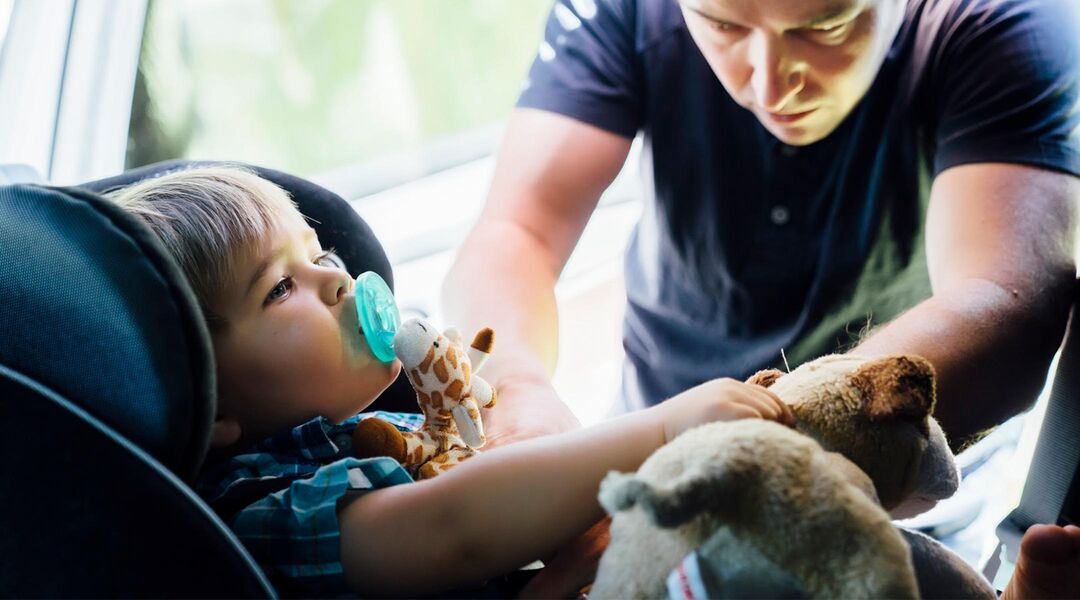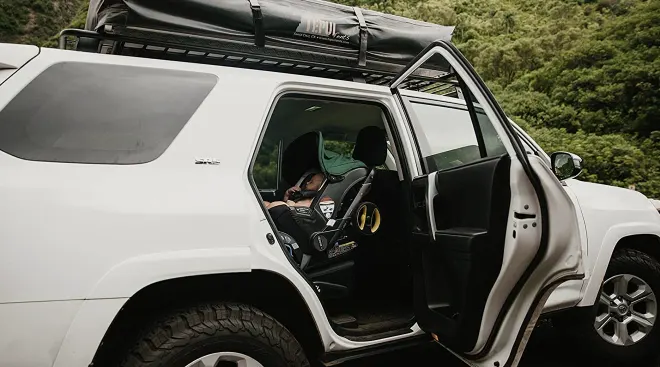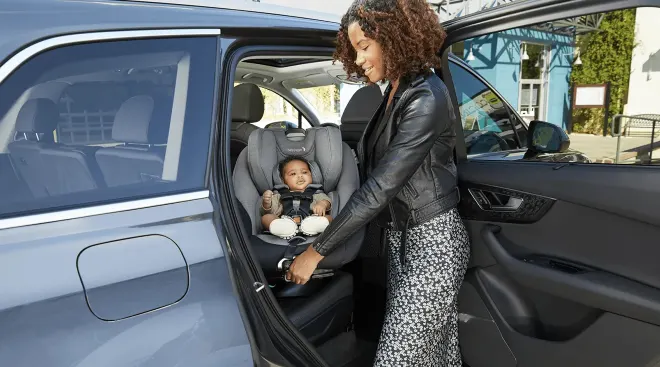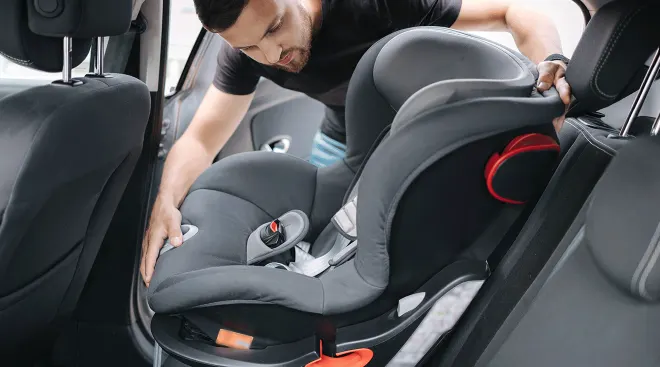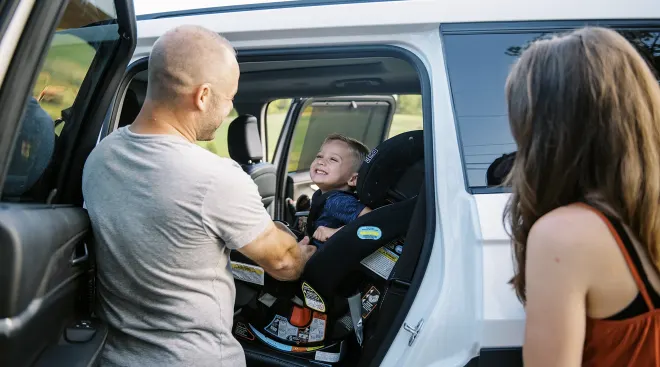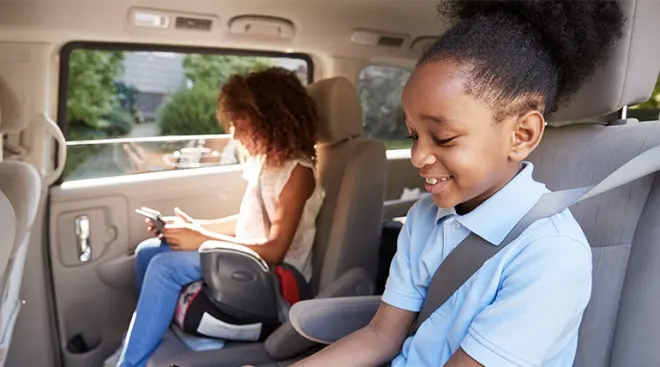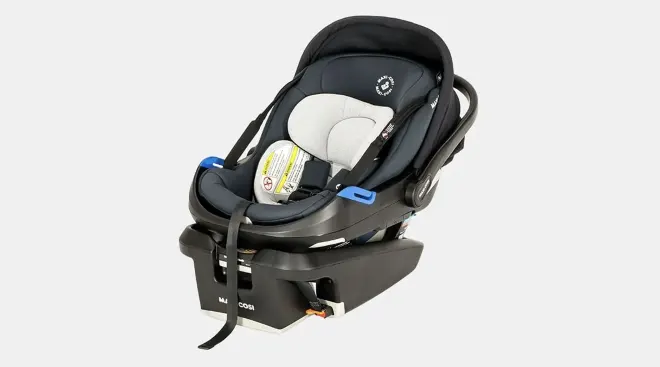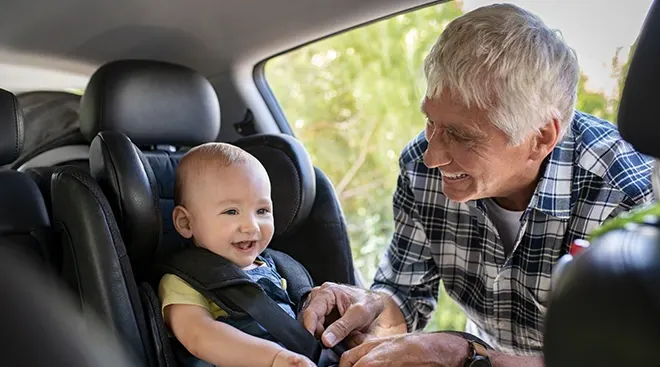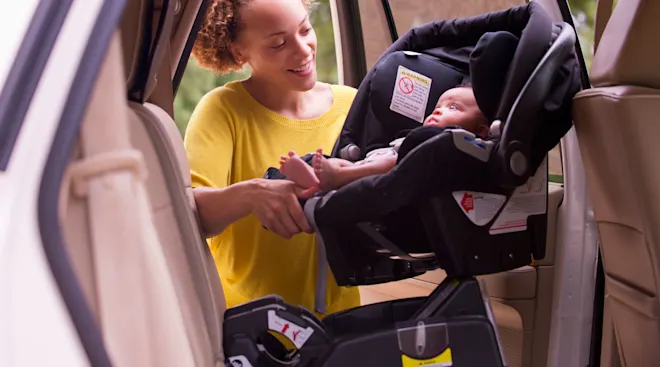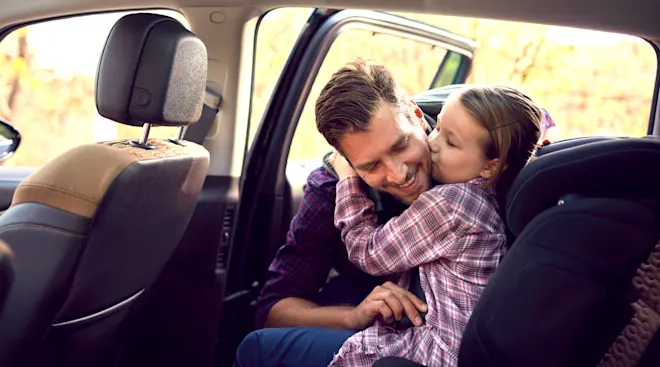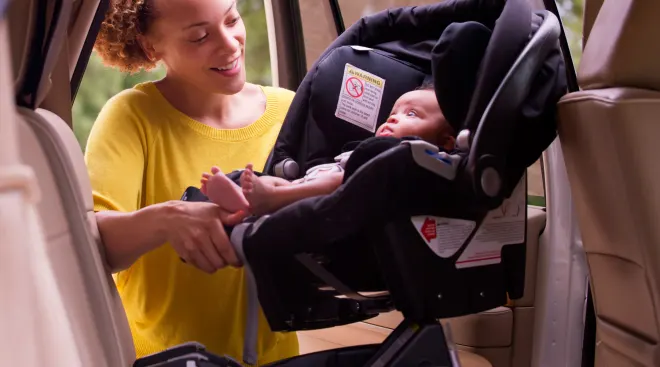Ask the Pediatrician: What Do I Need to Know About the New Car Seat Guidelines?
Meet Dina DiMaggio, MD, and Anthony F. Porto MD, MPH, official spokespeople for the American Academy of Pediatrics and the co-authors of The Pediatrician’s Guide to Feeding Babies and Toddlers. Each month, they’ll write about the latest AAP guidelines, studies and seasonal issues affecting babies and toddlers. Follow them on Instagram @pediatriciansguide.
As parents, we know how overwhelming choosing a car seat for your baby can be! There are so many car seat models available and it’s also hard to keep up with the ever-changing guidelines: How long should my child be rear-facing? When can I use a booster seat? Knowing the latest information, however, is extremely important, especially in light of some sobering statistics.
Nearly one in every 100,000 children dies in a motor vehicle crash (MVC). And approximately 20 percent of children involved in a fatal crash were unrestrained or incorrectly restrained. We’re here to help you make sure your child is restrained in their car seat properly with a summary of the latest guidelines from the American Academy of Pediatrics, updated in July.
Old guidelines said your child could switch from a rear- to front-facing car seat after 1 year of age and if they weighed at least 20 pounds. But since 2011, the AAP has recommended remaining in rear-facing position until children are at least 2 years old or until they reach the highest weight or height limit listed on the specific car seat model. Why? Rear-facing provides better protection for baby’s head, neck and spine in an accident.
We personally recommend parents keep their child rear-facing even beyond 2 years, as long as it’s okay to do so according to the manufacturer of the car seat. Don’t worry if your child’s feet touch the back of the car seat—it’s still best to keep them in this position.
Types of rear-facing seats
There are three types of rear-facing seats: rear-facing only, convertible, and 3-in-1.
Rear-facing only seats: Also known as infant car seats, these are used for infants up to 22 to 40 pounds and often come with a base that is left in the car.
Convertible seats (used rear-facing): These can be used rear-facing, can be converted to forward-facing when a child is older, and can have higher limits in weight and height. Convertible car seats don’t come with bases and usually stay in the car.
3-in-1 seats (used rear facing): These are called “3-in-1” since they can be used rear-facing, forward-facing, or as a booster seat. Again, they don’t have a separate base but may have higher limits in weight and height.
Helpful tips
- Never place a car seat in the front seat of a car. The safest place for a car seat is in the center of the back seat. Make sure your baby is snug in the car seat, that the chest clip is at the center of the chest, and the seat is at the appropriate angle (the car seat instructions will indicate the appropriate angle so your baby’s head is positioned correctly).
- If your baby is slouching down in the car seat, the AAP says it’s okay to place a tightly rolled blanket on each side of the baby, but do not place padding under or behind or use any insert that wasn’t made specifically for that particular car seat.
- Winter coats and heavy clothing can make the car seat straps too loose around your baby. It’s best to keep light clothing on when in a car seat, even in the winter!
- Newborns leaving the hospital should never be held in a caregiver’s arms in a car and should always be properly restrained in a car seat. Therefore, before having a baby, parents should make sure that the car seat is properly installed. If there are any questions on how to properly install a car seat, a certified child passenger safety technician (CPST) should be consulted. Preterm or very small infants are often observed in their car seat to make sure it is the appropriate fit before they can leave the hospital.
- The AAP recommends that children less than 40 pounds be in appropriate restraints when flying; most rear-facing, convertible and forward-facing seats are safe to use on airplanes and will have labels indicating they are safe to use in both cars and airplanes.
- Never use a car seat that is too old or has been recalled.
- There is not one “it” car seat. The best car seat for your baby is the one that fits appropriately for his or her weight, height and age and is installed correctly in your car.
Toddlers and preschoolers should be in a convertible or forward-facing seat with a harness once they have outgrown the rear-facing height and weight limit for their car seat. They should remain in the convertible or forward-facing seat with a harness for as long as possible, and until they have outgrown the weight and height limits for that seats.
Here are some signs that your child is almost ready to graduate to a booster seat:
- They are 4 years old
- Their shoulders are above the highest harness slot
- The tops of their ears reach the top of the seat
School-age children who exceed the weight and height of their convertible or forward-facing seat should be placed in a belt positioning booster seat, which raises a child up so that the car’s lap and shoulder belts fit appropriately. The lap belt should lie across a child’s upper thighs while the shoulder belt should be across the middle of the chest and shoulder. The shoulder belt should not rub against the neck. Pay special attention that your child doesn’t take the shoulder belt off and place it behind his or her arm.
A booster seat is used until the seat belt fits properly without the child needing to be raised up for proper positioning. This usually occurs when a child is 8 to 12 years old and has reached 4 feet, 9 inches tall.
Types of booster seats
Booster seats come in two types: high-back and backless.
High-back boosters: These are best in cars without headrests or with low seat backs.
Backless boosters: These are usually used in cars with headrests and high seat backs.
AAP website: Healthychildren.org
To find a National Child Passenger Safety Certified Technician: SafeKids.org
For specific car seat brands: HealthyChildren.org
Sources:
-
Lindsey L.Wolf MD, MPH1, Ritam Chowdhury MBBS, MPH, PhD, SM1. Jefferson Tweed BS3, LoriVinson RN, Elena Losina PhD4. Haider MD, MPH Faisal G., Qureshi MD, MBA. Factors Associated with Pediatric Mortality from Motor Vehicle Crashes in the United States: A State-Based Analysis. The Journal of Pediatrics, Vol 187, August 2017, Pages 295-302.e3.
About the authors:
Dina works as a board certified pediatrician at Pediatric Associates of NYC and at NYU Langone Medical Center. She has received numerous research awards, along with Patient’s Choice award, compassionate doctor recognition and was featured in the New York Times Magazine as a Super Doctors and New York Rising Star. She is dedicated to educating parents on baby and toddler nutrition and gives talks to parent groups throughout New York.
Anthony is a board certified pediatrician and board certified pediatric gastroenterologist. He is an Associate Professor of Pediatrics and Associate Clinical Chief of Pediatric Gastroenterology at Yale University. He has won numerous awards including the Norman J. Siegel Award at Yale University for leadership and providing outstanding clinical care as well as Physician of the Year during his time at Morgan Stanley Children’s Hospital. He has been named Castle Connolly Top Doctors since 2012. Anthony is interested in nutrition, especially in the care of children with difficulty gaining weight, feeding issues, and celiac disease. He loves teaching and educating parents and gives lectures to parents throughout New York and Connecticut.
Please note: The Bump and the materials and information it contains are not intended to, and do not constitute, medical or other health advice or diagnosis and should not be used as such. You should always consult with a qualified physician or health professional about your specific circumstances.
Navigate forward to interact with the calendar and select a date. Press the question mark key to get the keyboard shortcuts for changing dates.
































